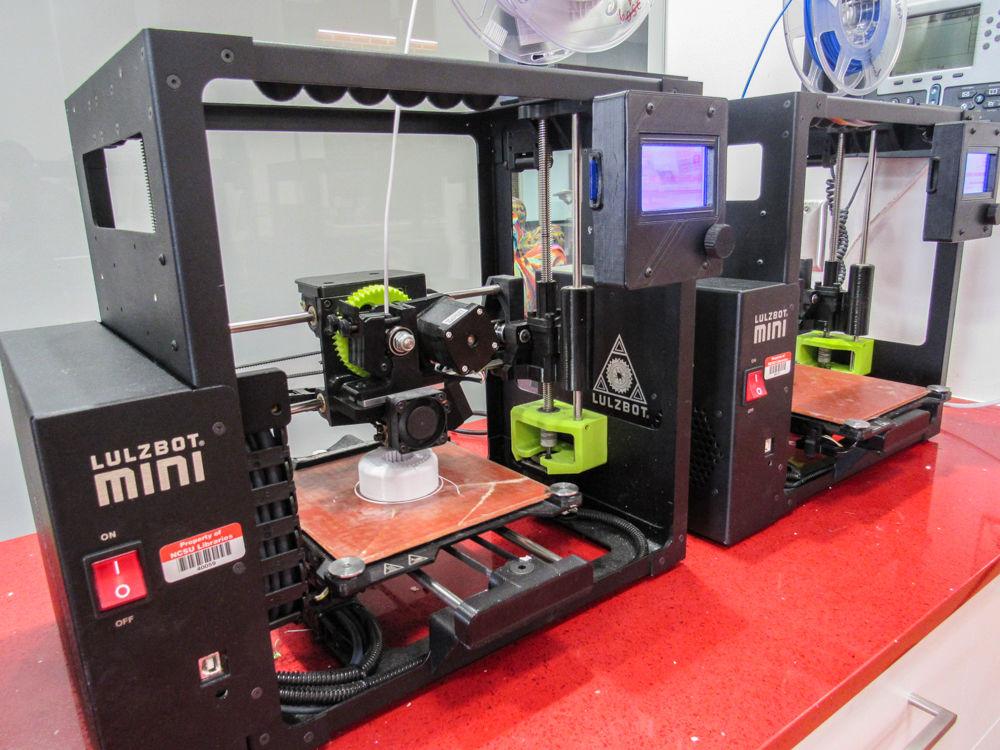Since the opening of the Hunt Library Makerspace in 2014 and D. H. Hill Makerspace in 2015, 3D printers have been available for use to all students, faculty and staff.
Justin Haynes, university library technician, said that the D. H. Hill Makerspace has 20 3D printers, but only 10 are available in the space with 10 on reserve so that the library is able to switch them out. At Hunt Library, there are six.
To use the D. H. Hill Makerspace, students just have to attend a Makerspace orientation to familiarize themselves with the safety protocols for using the 3D printers and other machines in the space. Hunt Library operates a little differently and functions as a 3D printing service whereby students submit their file and pay a fee to have their model printed.
“We are open to students, faculty and staff so anyone on campus can come in and use these machines,” Haynes said. “To use the printers at D. H. Hill Makerspace you have to go through a safety orientation first which takes about 40-45 minutes, and we teach you about the safety of the space, and then after that you have access to the space any time we are open. For the Hunt Makerspace all you have to do is take them your file, and they print for you, so that’s a 3D printing service.”
With each machine costing anywhere from $1,200 to $1,250, and the Hill and Hunt Makerspaces housing upwards 26 3D printers, these machines serve as a tremendous but expensive resource for the NC State community, according to Haynes. NCSU Libraries fund the majority of their Makerspace purchase through the technology fee that students pay through tuition. However, donations were accepted in the past since these spaces are new on campus.
“We have a few different areas of funding,” Haynes said. “The first is your technology fees that students pay that pays for all the technology across campus. We get a portion of that for the libraries, and a portion of that goes to the Makerspace. We have had donors and grants that have been given to us because we are such a new space, but most of the fees for buying printers comes from students.”
Many students take advantage of these machines for both academic and personal project creation. The space is often used by first year STEM students who do not yet have access to departmental machines and non-STEM students whose colleges are unable to provide 3D printing resources to them, Haynes said.
“We see a lot of humanities, freshman engineering, and a lot of chemistry and other sciences,” Haynes said. “Humanities usually don’t have these spaces at all so this is the best space for them to come and use these machines. Some of the coolest projects I’ve seen came from English and communication classes. Then all these students are coming back for personal reasons and printing project of their own.”
Offering 3D printing as a resource for students academically and recreationally has allowed students of all disciplines to reinforce classroom concepts in new ways. Krystin Gollihue, CRDM graduate extension assistant, explained the effects that utilizing the 3D printers for projects in her class and recreationally had on her students.
“I watch my students come in here and make things and code things and print things and they have this whole new literacy,” Gollihue said. “They get to feel a part of the campus community in ways that they don’t often get to feel because it is a very S.T.E.M. heavy community, but at the same time it’s kind of recasts what they think they are as professionals and as students.”
To learn more about 3D printing on campus, students can visit the NCSU Libraries website.








